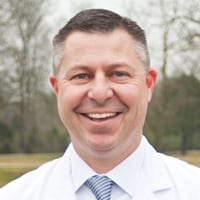Q: I have severe scarring from acne. What are my options?
A: While there is no magic cure for acne scarring, treatment can significantly improve your skin’s appearance. Your first step is to address any current breakouts. Once your acne is under control, you will be in a better position to treat your existing scars. The best scar treatments for you will depend on the depth and severity of the affected area as well as the quality of your skin. If you’re looking to improve the appearance of darkened areas, you may only need to use a cream with cortisone and/or skin lightening components. For small, shallow acne scars, a doctor can perform spot treatment with an injectable filler to elevate the indented tissue. If you have deeper, larger scars, you might consider more aggressive treatments such as skin peels, dermabrasion, laser resurfacing, or surgical 


Cindy McCord, MD
Plastic and Reconstructive Surgeon
Associates in Plastic Surgery
Locations in Chattanooga and Cleveland
423.624.0021, aprs.md
Q: My daughter has the flu and is running a high fever. At what point should I seek urgent care?
A: This year’s flu season has been mild so far, but there are a few important things to remember, as it’s not quite over. Any child under 2 months of age with a fever above 102 degrees should be taken immediately to a medical professional for an assessment. Children up to age 12 with flu-like symptoms should be taken to a medication professional and tested for influenza if a fever exceeds 101.5 degrees. To treat your daughter’s fevers 


Todd Rudolph, MD
Medical Director
AFC Urgent Care/Family Care (formerly Doctors Express)
Locations in Chattanooga, Hixson, and Cleveland;
Plus Corporate Locations in Lookout Valley and Fort Oglethorpe
423.531.0911, urgentcaretn.com
Q: How can I tell the difference between a benign mouth sore and oral cancer?
A: More than 90% of oral cancers are oral squamous cell carcinoma (OSCC), which can appear as a growth or sore that does not go away. If any suspected tissue irritation is removed, then a benign mouth sore should heal within two weeks. Early recognition, diagnosis, and treatment of OSCC can significantly minimize the need for extensive surgery. Features of oral cancer are the development of lumps, bumps, and velvety white, red, or speckled (white and red) patches. Of particular concern are lesion locations on the tongue and the floor of the mouth. Early lesions are frequently undetected due to the lack 


Karl L. Meyer, DDS, MD
Oral Surgeon
East Brainerd Oral Surgery
Located in East Brainerd at 1350 Mackey Branch Rd.
423.296.8210, eastbrainerdoms.com
Q: What is “minimally invasive” spine surgery? How is it different from traditional spine surgery?
A: Minimally invasive surgery (MIS) has made large strides in the field of spine surgery. While traditional open procedures are still necessary for certain conditions, MIS is frequently a viable option for spine patients. Broadly speaking, MIS and open surgery both seek to achieve the same goals: to decrease pain and improve function by relieving pressure from the nerves and providing stability. However, with MIS, a surgeon can use CT imaging during the procedure for additional guidance, and this technology can assist him or her with accurate placement of implants. Studies suggest MIS and open surgery both offer comparable long-term results. However, in the short term, patients tend to recover more quickly with MIS and spend less time in the hospital. In my practice, I utilize 


Jay Jolley, MD
Spine Specialist and Surgeon
Southeastern Spine
Located in Ooltewah on Apison Pike and Downtown on Citico Ave.
423.693.2175, southeasternspine.net

